King Eider Somateria spectabilis
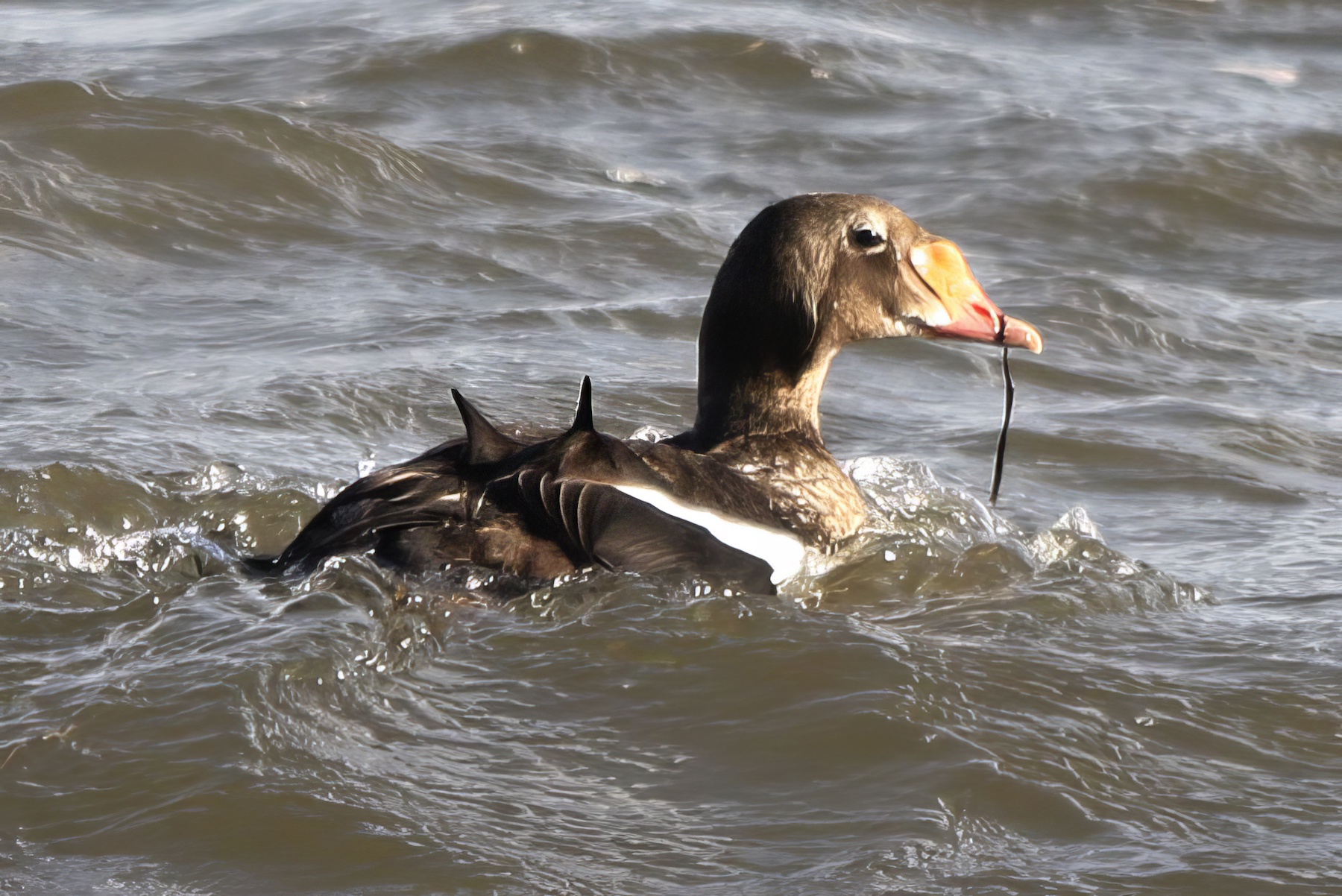
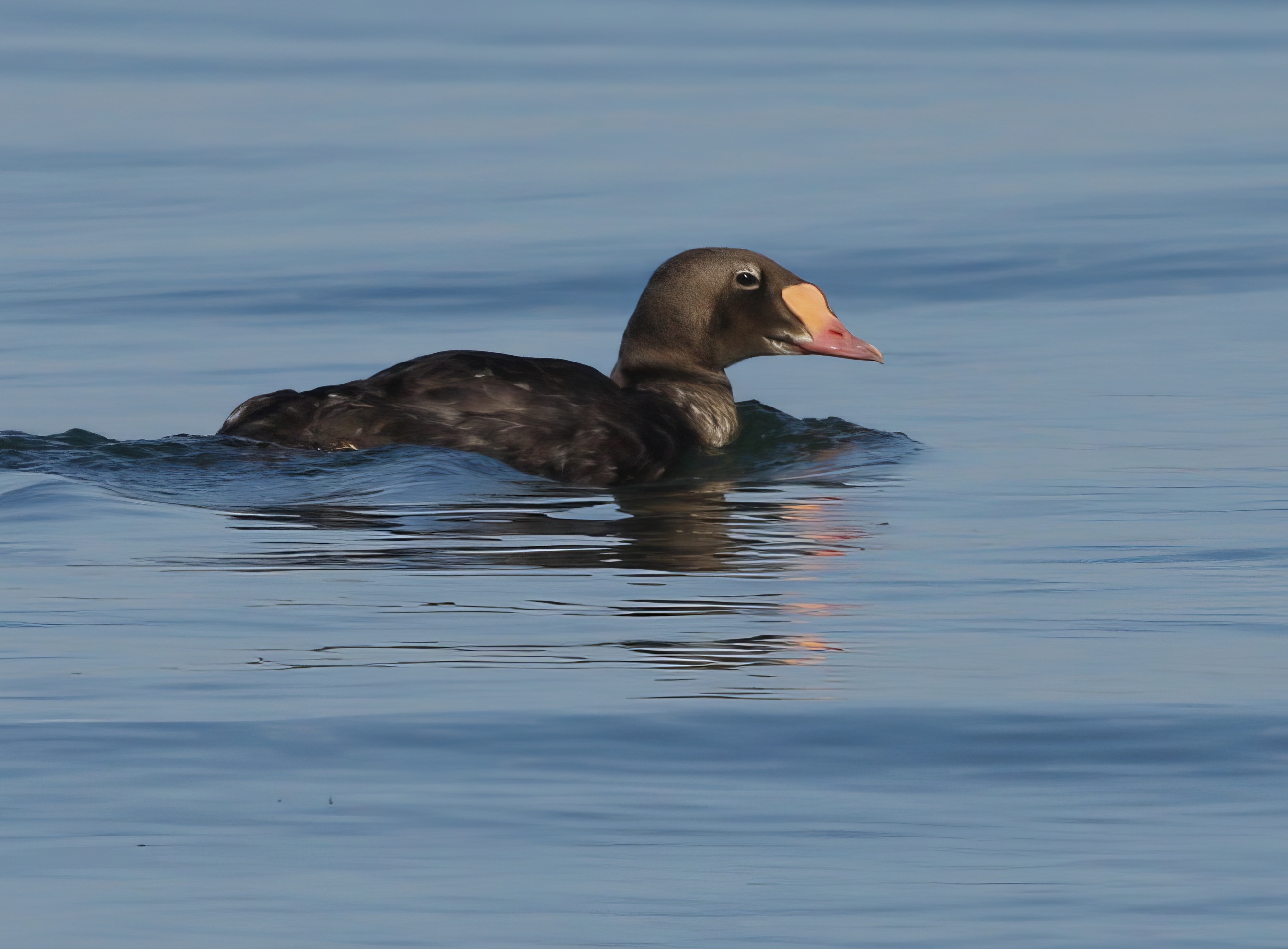
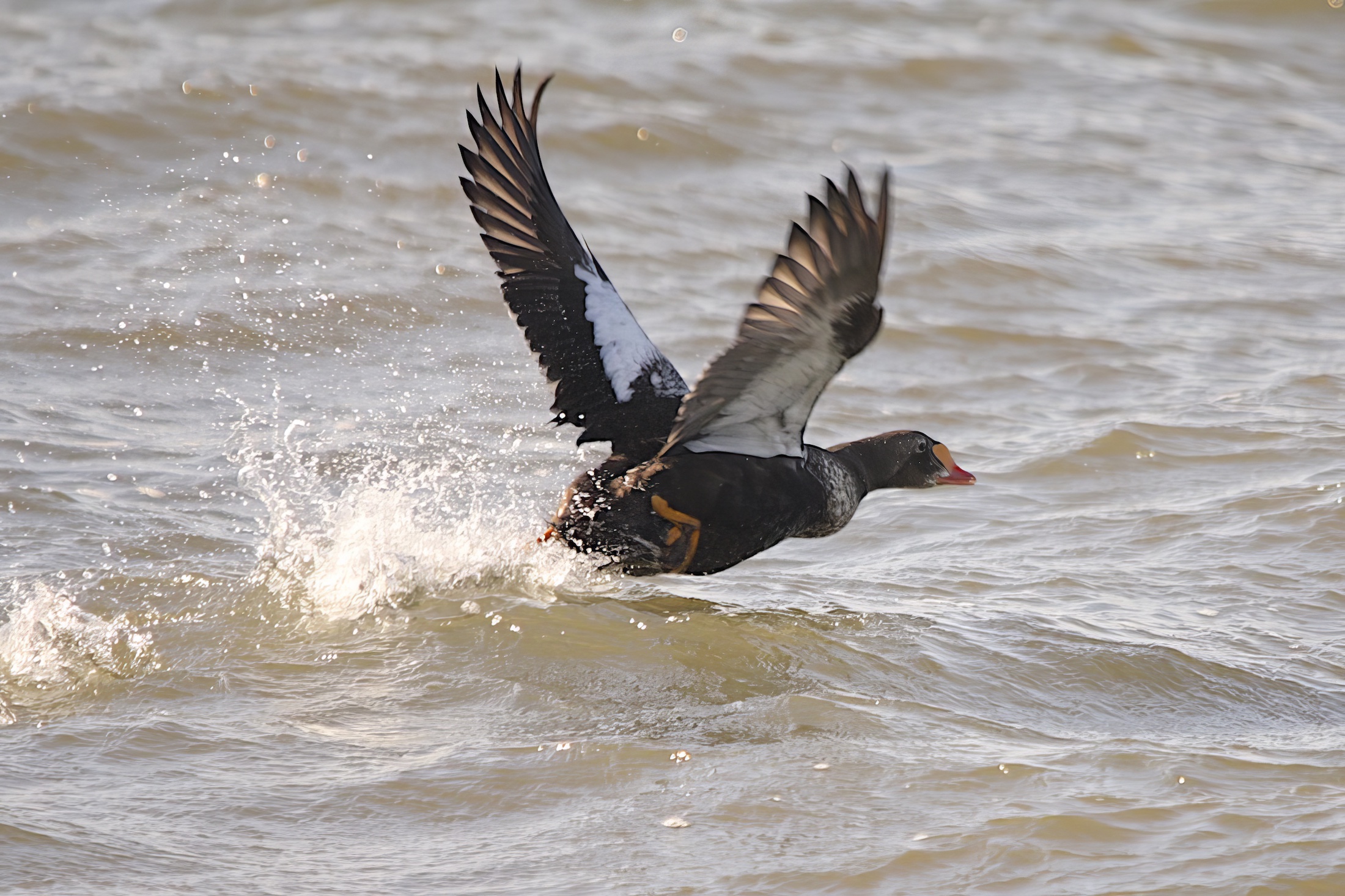
King Eider, immature male, taken from a boat in The Wash: left (Phil Hyde), centre (Neil Smith) September 12th; right October 4th October 2009 (Phil Hyde).
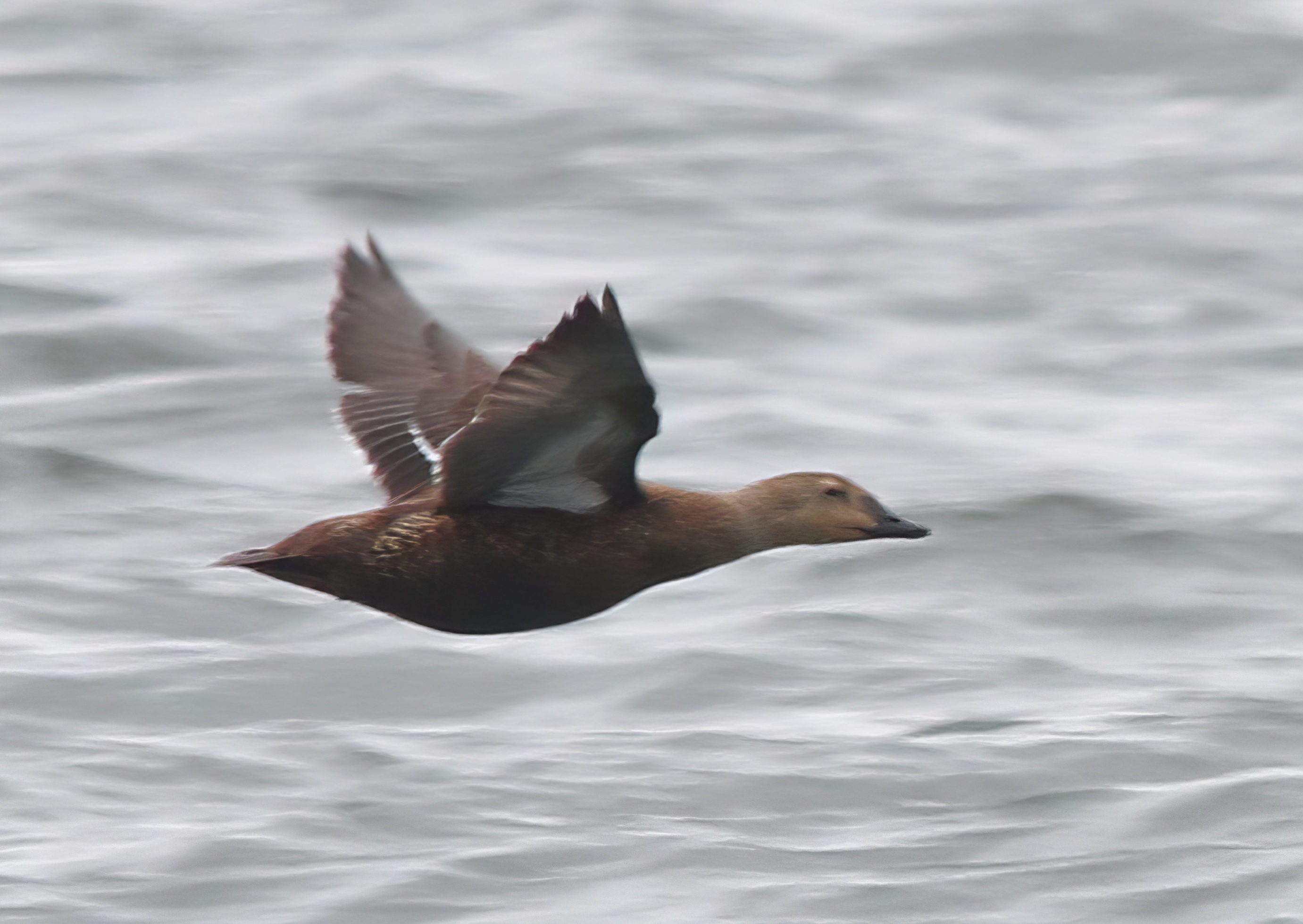
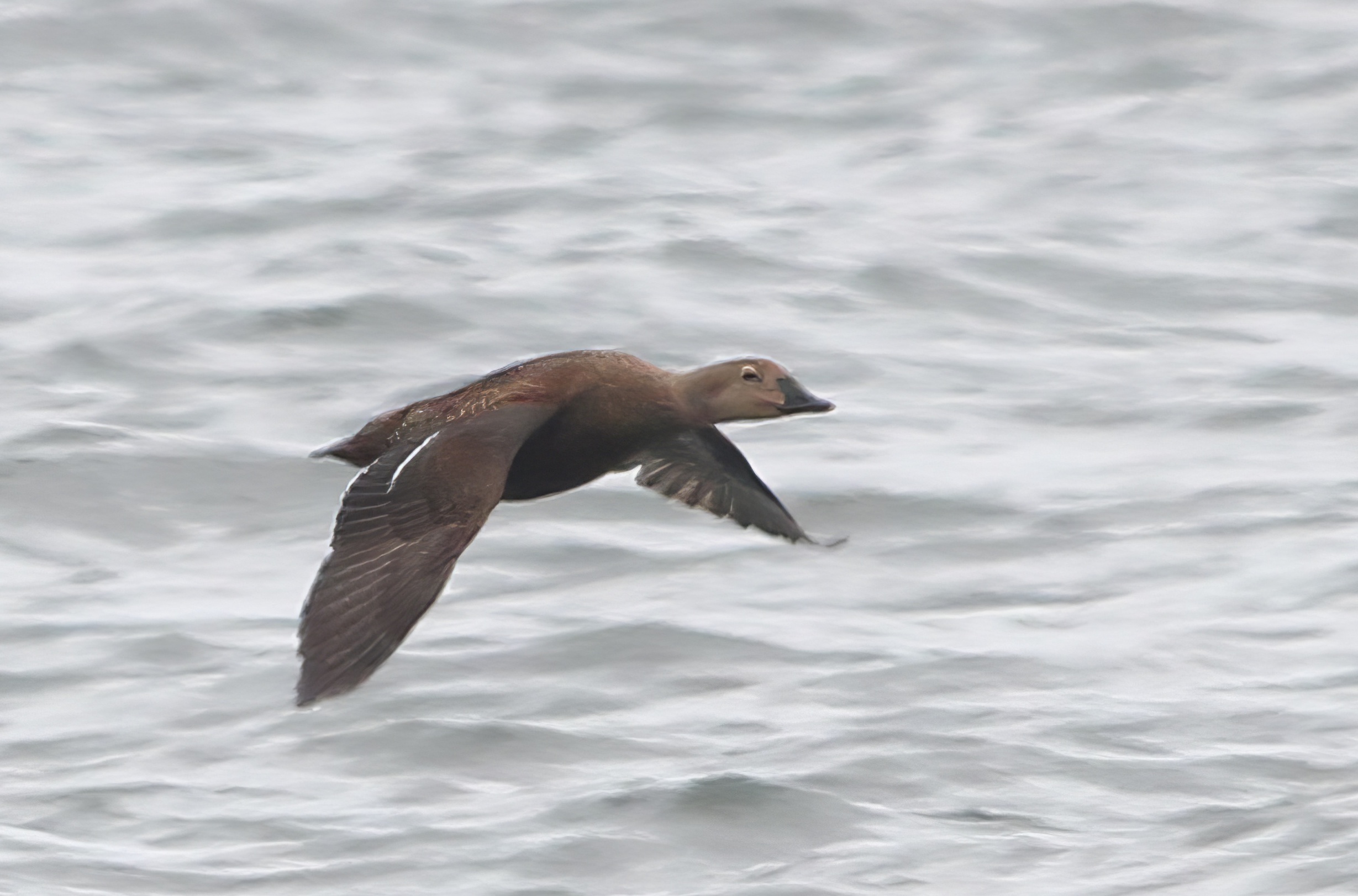
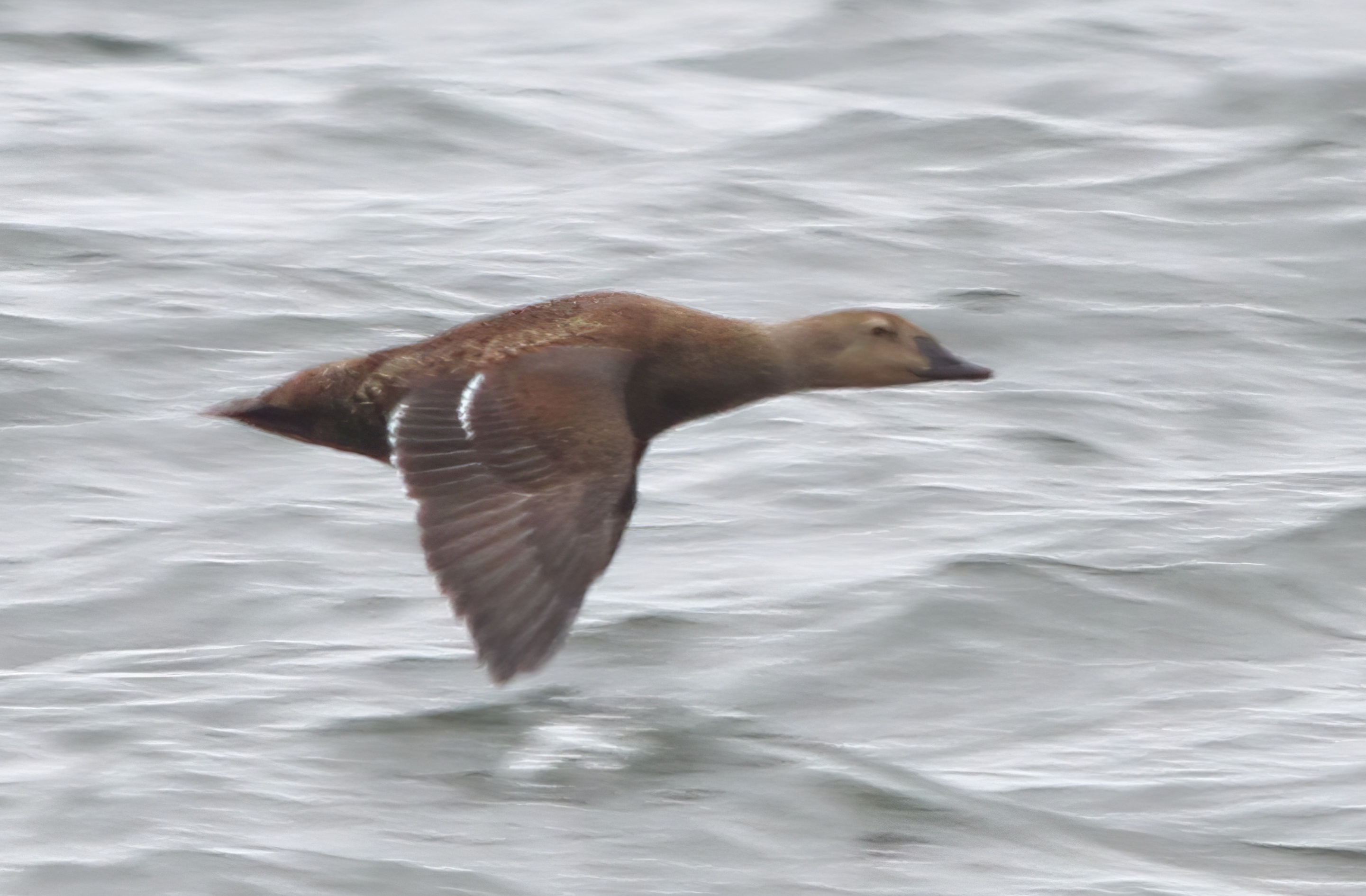
Female King Eider off Wrangle Flats taken on a Wash Pelagic, April 21st 2012 (Paul Lawrence).
This high Arctic duck has been hard to find offshore in the county despite the presence of large flocks of Common Eider, Somateria molissima, wintering in The Wash. The first record was of an eclipse male found off the Witham Mouth on September 5th, 2009 where it remained until October 9th. It moved slightly north later in its stay and was last seen off Leverton on October 18th. Many local observers saw this bird from land, but several boat trips were hastily arranged to get better views. Ageing proved difficult, but it most resembled a second calendar year bird. When first found, it had completely moulted its primaries and secondaries. A boat trip into The Wash on October 4th observed its first flight, so it had taken a maximum of thirty days to complete a full wing moult. This was the first county record. The second record of an adult female in April 2012 was also found by a boat trip. It later relocated along The Wash and was seen from Gibraltar Point in July 1st-7th. Scotland is still the best place to see this species and BBRC statistics show that there have been194 British records 1950-2018.
| Site | First date | Last date | Count | Notes |
| The Wash (Witham Mouth/Freiston Shore/Leverton) | 05/09/2009 | 18/10/2009 | 1 | Eclipse male, flightless when found on 05/09, first flew 04/10. |
| The Wash (Wrangle Flats) | 21/04/2009 | 1 | Female, from pelagic trip | |
| Gibraltar Point NNR | 01/07/2009 | 07/07/2009 | 1 | Female, presumed same as April 2009 bird |
Finder’s report: King Eider at the Witham Mouth, September 5th, 2009, first county record
by P. French
Note: This account is based on the article published in the Lincolnshire Bird Report 2009.
Circumstances
I have been scanning the eider flock at Freiston Shore on a regular basis since autumn 2005, mainly looking for King Eider. As it was a long overdue first for the county and Freiston holds the only regular flock of eiders in the county, it seemed like a good bet that one would turn up one day. Four years later and I was scanning the Eider flock off the Cut End hide at Witham Mouth when I saw that one of the distant eiders seemed to show an orange bill. It was facing directly towards me, preening its breast, and I held my breath for what seemed like several minutes. It then turned its head, parading its glowing orange bill in the process, and I went into state of shock for a little while. OK, so it’s not the rarest of birds, but I had wanted one for a long time, and now here it was, on my patch and with no-one else around. I quickly phoned John Badley who happened to be further up the coast, and after a tense half an hour he managed to locate it from a different location. Meanwhile, the other local birders were arriving at Witham Mouth, and I happily pointed the bird out. As it was late evening by this time, no other Lincs birders could get there in time. The next morning dawned and there they all were! The Cut End hide was packed (another first!), and the eider was soon located. However, it proved to be distant and difficult to see. This would be the pattern for most of its stay. Some people got lucky and saw it close inshore at Witham Mouth, but most had to be content with very distant views where the only feature visible was an occasional glimpse of an orange bill. A couple of boat trips were hastily arranged, and excellent views were had from the Boston Belle on September 12th when the best photos were taken. The bird stayed until October 18th at least, but continued to be elusive, and with less people and high tides coinciding with darkness, it became very hard to catch up with.
Description
The fact that it was a drake was obvious, but aging proved difficult. I suspect that it was a 2CY drake in eclipse. The white breast suggests that, but any opportunity to test that was scuppered with its untimely departure on October 18th. Should it reappear in subsequent winters, we’ll be in a better position to accurately age it.
General appearance – similar to Northern Eider, but distinctly shorter, squatter and squarer. Bill structure very different, with large, swollen frontal process giving a steep forehead at a distance. Tail often held straight up in the manner of a stifftail.
Bare parts – frontal process very swollen, square-ended and orange in colour. Bill itself was pink. The orange ‘knob’ glowed at a distance, while the pink bill was very hard to see and was overpowered by the orange. Eyes dark, legs orange.
Plumage – loral area dark brown. Ear coverts and nape paler and greyer brown. This contrast was visible at some distance. Border between these two areas was an even paler line that was surprisingly obvious in the field, and drooped down from the eye, lending the bird a somewhat sad expression. Neck grey-brown. Breast basically off-white, but with some darker peppering mixed in. Belly, flanks, mantle, scapulars, rump and undertail blackish. Median and greater coverts bright white, isolated within the black wing. Primaries and secondaries completely moulted, giving a very auk-like impression to the wing when flapped. By the end of its stay, it had regrown its remiges and was capable of flight.
(Account as per new Birds of Lincolnshire (2021), updates included September 2022 and July 2023)

